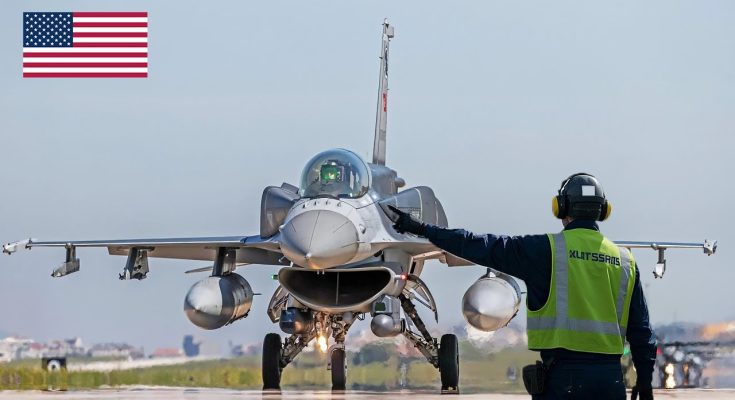Finally! F-16 Block 70: The Spectacular Return of the Legendary Fighter Jet!
The F-16 Fighting Falcon is one of the most iconic fighter jets in the world, with over 4,600 units built and serving in more than 25 countries. Originally designed in the 1970s by General Dynamics (now Lockheed Martin), the F-16 has seen numerous upgrades over its decades-long service life. Now, with the introduction of the F-16 Block 70, the legendary fighter jet is being revitalized for modern combat, and it’s ready to make a spectacular return to the skies.
The Evolution of the F-16
The F-16 has been a mainstay of air forces worldwide for over four decades. Its versatility, affordability, and impressive performance in air-to-air and air-to-ground combat have made it a reliable workhorse for many nations. However, with the emergence of advanced threats such as fifth-generation fighters, evolving air defense systems, and new technologies, even a proven platform like the F-16 needs to adapt to remain relevant in modern warfare.
The F-16 Block 70 is the latest and most advanced version of the aircraft, designed to integrate cutting-edge systems while maintaining the core attributes that have made the F-16 so successful. The Block 70 is often referred to as the “Viper,” a name that reflects its sleek, agile design and the fighter’s ability to deliver quick, decisive strikes. But the new enhancements make it more capable than ever before, ensuring that the F-16 remains a top contender in the 21st century.
Cutting-Edge Upgrades
The F-16 Block 70 incorporates numerous upgrades that significantly improve the jet’s capabilities. One of the most notable improvements is the integration of the APG-83 AESA (Active Electronically Scanned Array) radar. This radar provides improved range, resolution, and resistance to electronic jamming, allowing the F-16 Block 70 to track multiple targets simultaneously and engage them with greater precision. The advanced radar also enhances the aircraft’s situational awareness, helping pilots to better detect and avoid threats in increasingly complex battle spaces.
The cockpit of the Block 70 has also received a significant overhaul. It features a new glass cockpit with a large, high-resolution touchscreen display, making it easier for pilots to manage weapons systems, radar, and other flight information. The modernized cockpit reduces pilot workload, allowing for faster decision-making in high-pressure environments. Furthermore, the Block 70 is equipped with digital flight controls and a new mission computer, improving the aircraft’s overall reliability and performance.
In terms of weapons, the F-16 Block 70 is fully compatible with the latest air-to-air and air-to-ground munitions. The jet can carry a wide variety of precision-guided bombs, rockets, and missiles, including the Joint Direct Attack Munition (JDAM) and AMRAAM (Advanced Medium-Range Air-to-Air Missile). This makes the F-16 Block 70 highly effective in both air combat and strike missions against ground targets, maintaining its reputation as a versatile multirole fighter.
Strategic Impact on Global Military Forces
The F-16 Block 70 is not only a game-changer for countries upgrading their existing fleets, but it also serves as an affordable alternative for nations looking to bolster their airpower capabilities without breaking the bank. For example, countries like Bahrain, Bulgaria, and Slovakia have already signed deals to acquire the F-16 Block 70, recognizing the aircraft’s unmatched blend of performance, cost-effectiveness, and combat readiness.
These new versions of the F-16 will allow smaller air forces to modernize their fleets without having to invest in the significantly more expensive fifth-generation fighters, like the F-35. The F-16 Block 70’s combination of advanced radar, modern avionics, and powerful weapons systems means that it remains highly effective in the face of emerging threats, making it a formidable force multiplier for allied nations.
The Spectacular Return of the F-16
The F-16’s remarkable longevity in the global military landscape is a testament to its outstanding design and versatility. With the Block 70 upgrade, Lockheed Martin has ensured that the Fighting Falcon is not just an artifact of the past, but a modern, capable fighter capable of operating in today’s high-tech, fast-paced combat environment. While newer fifth-generation fighters like the F-35 and F-22 may be grabbing most of the headlines, the F-16 Block 70’s return is a reminder that legendary aircraft, when properly upgraded, can continue to excel and adapt.
For many air forces around the world, the F-16 Block 70 represents the best of both worlds: a proven platform with cutting-edge technology at an affordable price. As global military dynamics continue to evolve, the F-16 Block 70 is set to play a key role in shaping the future of air combat, ensuring that this legendary fighter jet remains a vital component of military forces for years to come.
In conclusion, the F-16 Block 70 is the spectacular return of a proven fighter jet, equipped with the latest technologies and ready to face the challenges of modern warfare. It’s not just a fighter—it’s a symbol of adaptability and strength in a rapidly changing world.



